SEAN FADER THIRST/TRAP


Cover image: @gogo_gemini #gaylife #gaybeard #femme #masc , 2019-2020.


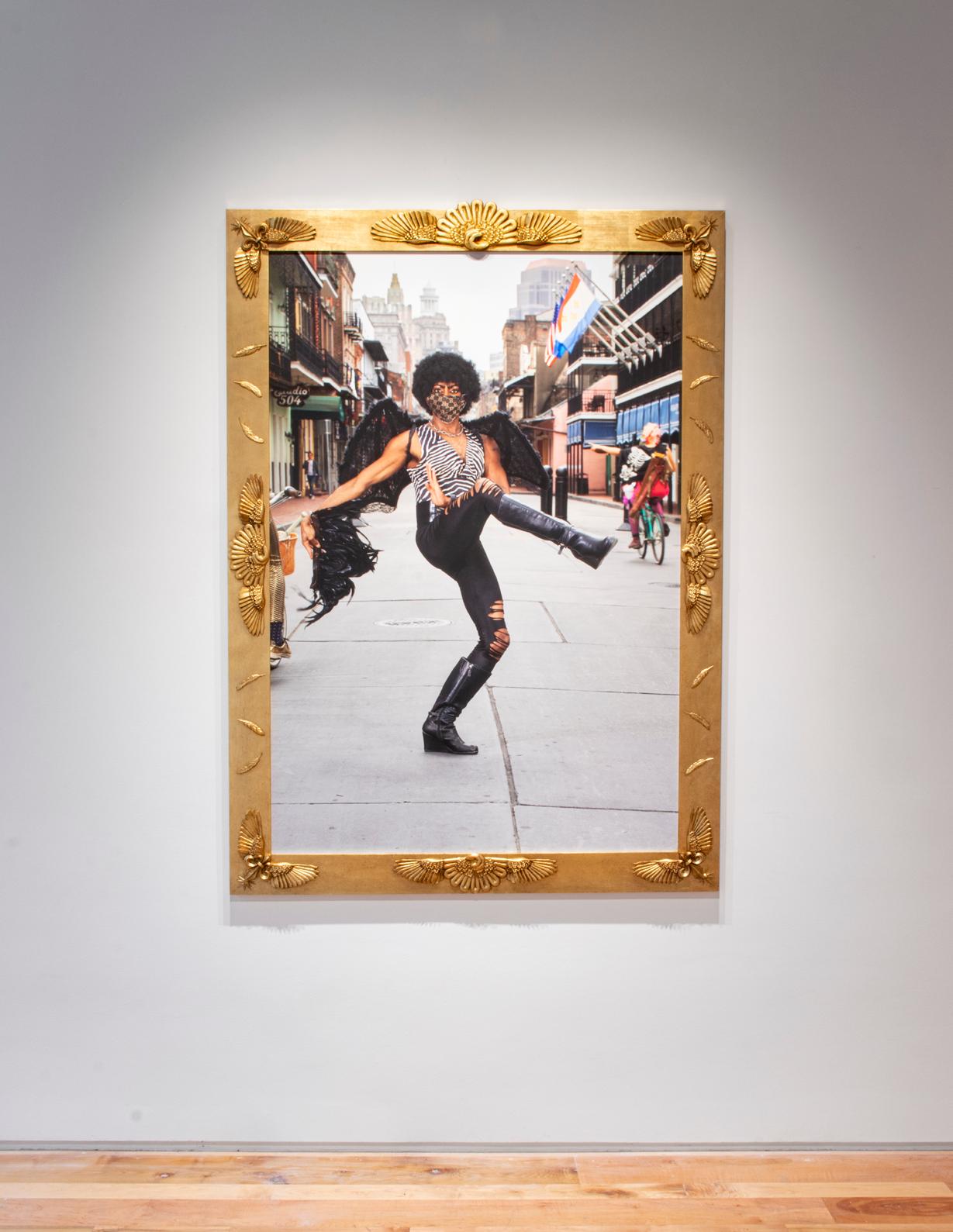



Cover image: @gogo_gemini #gaylife #gaybeard #femme #masc , 2019-2020.




It is a truism to talk about how much the world has changed due to the fact that most people in the United States carry a camera with them at all times. The possibilities of quick, highdefinition photography and video have been catalytic to social movements, political activism, and geographically dispersed community formation. At the same time, the ease of digital photography has ushered in a flood of vanity, commodification, and new and virulent forms of normativity and chauvinism. With its ubiquity, the digital photograph has hypercharged the circulation and consumption of images, tipping us to a new pictographic disposition.
Thirst/Trap , Sean Fader’s two-part exhibition at Denny Dimin Gallery, addresses this history by focusing on two key moments—its beginnings in 1999–2000 when digital cameras became commercially available to many and, twenty years later, to 2019–2020, the time when the digital photograph and social media have become perhaps the primary means of political, economic, social, and personal exchange. Fader’s two projects, Insufficient Memory and Best Lives , ask about the ways in which queer politics and communities have been forged through the circulation of photographs at these two moments, and he prompts us to question what exclusions and losses predicated this digital revolution.
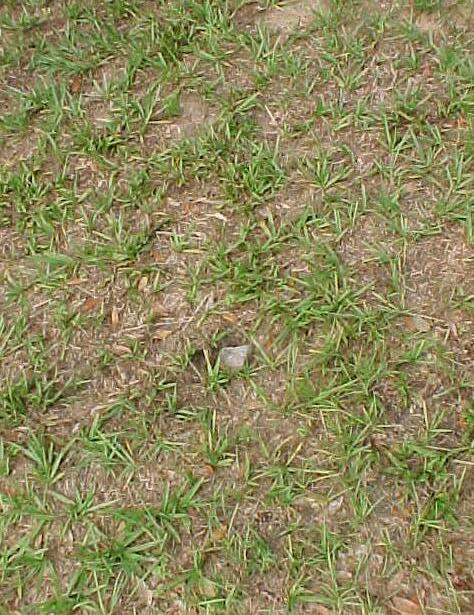
The series Insufficient Memory is the result of Fader’s research into hate crimes in 1999 and 2000—years when a national conversation about them gained visibility. Spurred by national outrage over the murder of Matthew Shepard in 1998, then-President Bill Clinton called for federal hate crimes legislation as part of his State of the Union Address in 1999—initiating a contentious debate that would stretch over a decade until the law’s passage in 2009. A chance occurrence prompted Fader to think back to this period in time: in 2018, he found one of the earliest fully digital cameras, Sony’s Digital Mavica, from 1999. He began to ask about the changes and continuities across the two decades that separated the present from that year that saw the beginning of a national conversation about hate crimes and the inauguration of the age of digital photography.
When it premiered in the late 1990s, the Sony Digital Mavica camera was seen as groundbreaking, and it was one of the first fully digital cameras accessible to nonprofessionals. The Mavica had first been released in 1981, but these earlier versions were essentially analog video cameras that took digital stills that were then saved to 2in video floppy disks for viewing on television screens and monitors. In the late 1990s, Sony relaunched it as the “Digital Mavica.” This series of fully digital cameras produced image files saved to 3.5in floppy disks that could be read by home computers (which, in turn, were increasingly being connected to the internet, albeit usually through dial-up modems). Cameras in the Digital Mavica line were marketed to non-professionals, heralding the rapid growth of affordable consumer digital cameras beginning around 1999.
Compared to the high definition smartphone cameras of today, the Digital Mavica’s resolution was low, the number of photographs that could fit on one disk was small, and the retrieval of those images to a computer (let alone the internet) was sluggish. Its memory capacity was limited, and its images would seem grainy today. For Fader, the technical limitations of this once futuristic camera (and its frequent error message of “insufficient memory”) became a metaphor for all that went unseen or overlooked in that decisive moment of a national
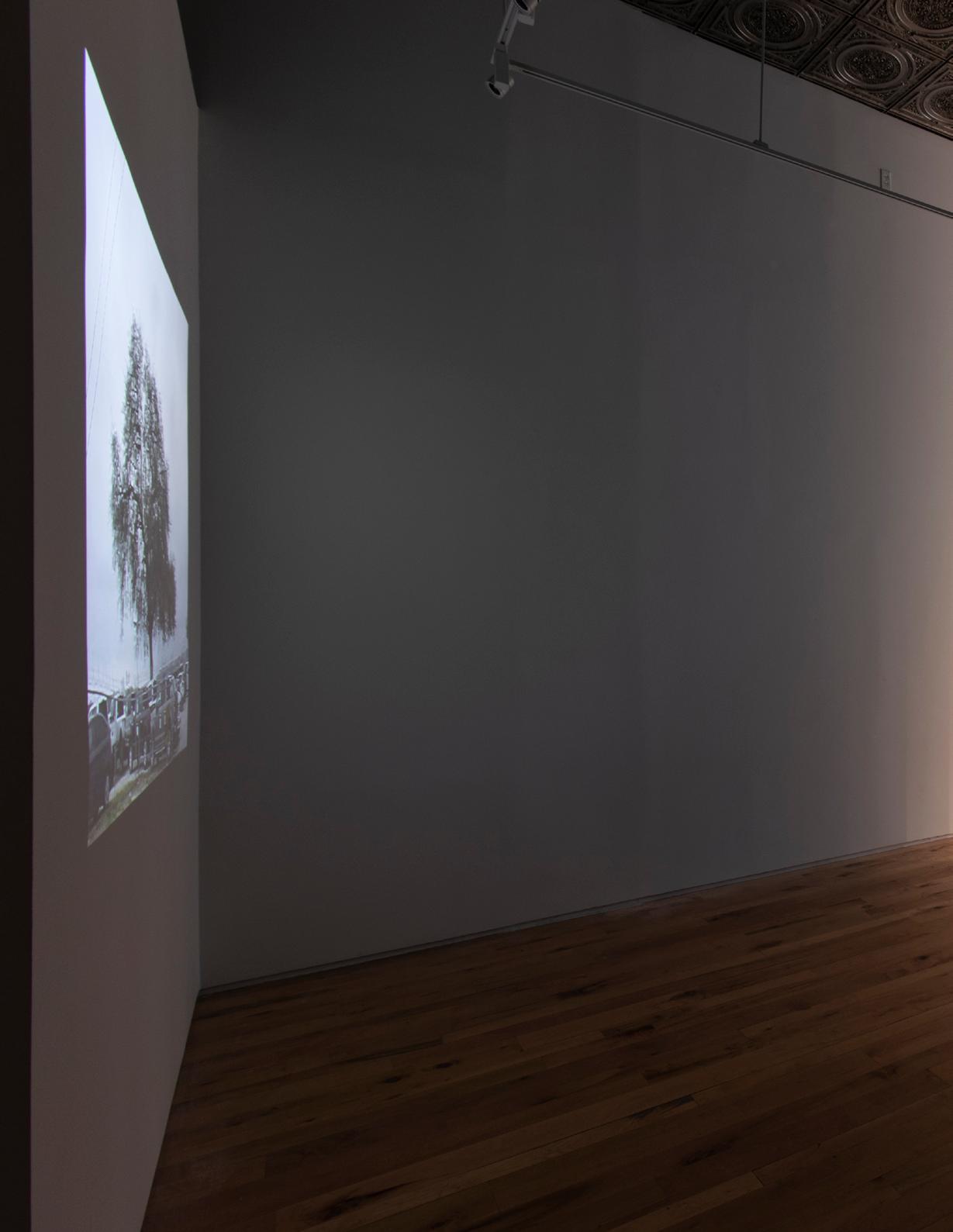

conversation about hate crimes. Histories of queer and trans activism and community building have often seen the late 1990s as a watershed because of the exponential growth of the internet and household digital technology, emphasizing the greater transgeographic communication afforded by the internet and its ever-growing capacities (especially for the circulation of digital photography and video). But, Fader began to ask, what was never captured in that moment? What had memory failed to retain?
Today, we mark important sites and events through photographs (geotagged, even), but two decades ago the photograph did not circulate as readily (and from so many sources). This was the case with the reports of hate crimes that Fader began to investigate as part of his research. If mentioned at all in newspapers, reports of violence against trans and queer people were rarely accompanied by a photograph in these brief and often coded notices (some with little information other than a name and a location of the murder).
Fledgling activist websites devoted to chronicling these offenses helped to gather this scattered information in these years, but they, too, often had no access to photographs of the deceased or of the scene of the crime. (Most of these websites are long inoperative, and Fader accessed what he could of them through the archived copies in the Wayback Machine.) This lack of photographic testaments was especially pronounced with hate crimes against people of color (and, in particular, trans women of color), and Fader began to see a pattern of data loss at this pivotal moment when LGBT activism was said to be gaining new reach on the internet. He
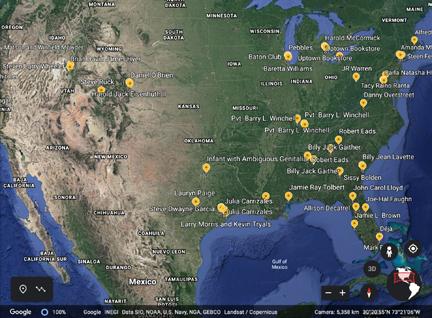 Screenshot from Insufficient Memory’s Google Earth Interactive Tour
Screenshot from Insufficient Memory’s Google Earth Interactive Tour

found that the few hate crimes that were remembered through photographs tended to focus on white victims, as with the murder of Matthew Shepard (who Fader, in his press release, described point blank as “white, middle class, big future”). However much Shepard’s tragic case gave a face to the debate about hate crimes and sparked historic outrage that shifted public opinion, we must also acknowledge that there were multitudes more—including a disproportionate number of trans and queer people of color—whose murders were not able to be mourned with a photograph that made it into the daily news.
Insufficient Memory is a series of photographs of places related to hate crimes that occurred in the continental United States in the years 1999 or 2000. Fader researched this moment and found accounts documenting over 50 murders of trans and queer people in these years—still only a fraction of what occurred. He drove some 15,000 miles in total to visit and photograph places related to each of them, and he paid witness to each murder with a photograph of a site made with the decades-old Digital Mavica camera. The resulting large-scale photographs bear the evidence of that memory loss and historical distance in their pixelation and grainy contours. These photographs are of everyday places, now unmarked and anonymous. In conjunction with these photographs, Fader prepared an interactive GoogleEarth map with narratives written by him about each site. Working with the information he could find, he attempts to tell these people’s stories and create a digital marker (on GoogleEarth) so they can be commemorated and visited remotely. Again, many of these stories relied on local news sources (the kind that are not often—or comprehensively—digitized or archived), and Fader’s photographs and texts collect these stories of loss and violence with the understanding that they are just the tip of the iceberg.
Fader’s other series of large-scale photographs, Best Lives , jumps to the present moment, and these photographs have been created in deliberate contrast to the more sober images in Insufficient Memory . Best Lives is a series of collaborative profile pictures taken by Fader over the last two years. He created a smartphone algorithm that tracked commonly used
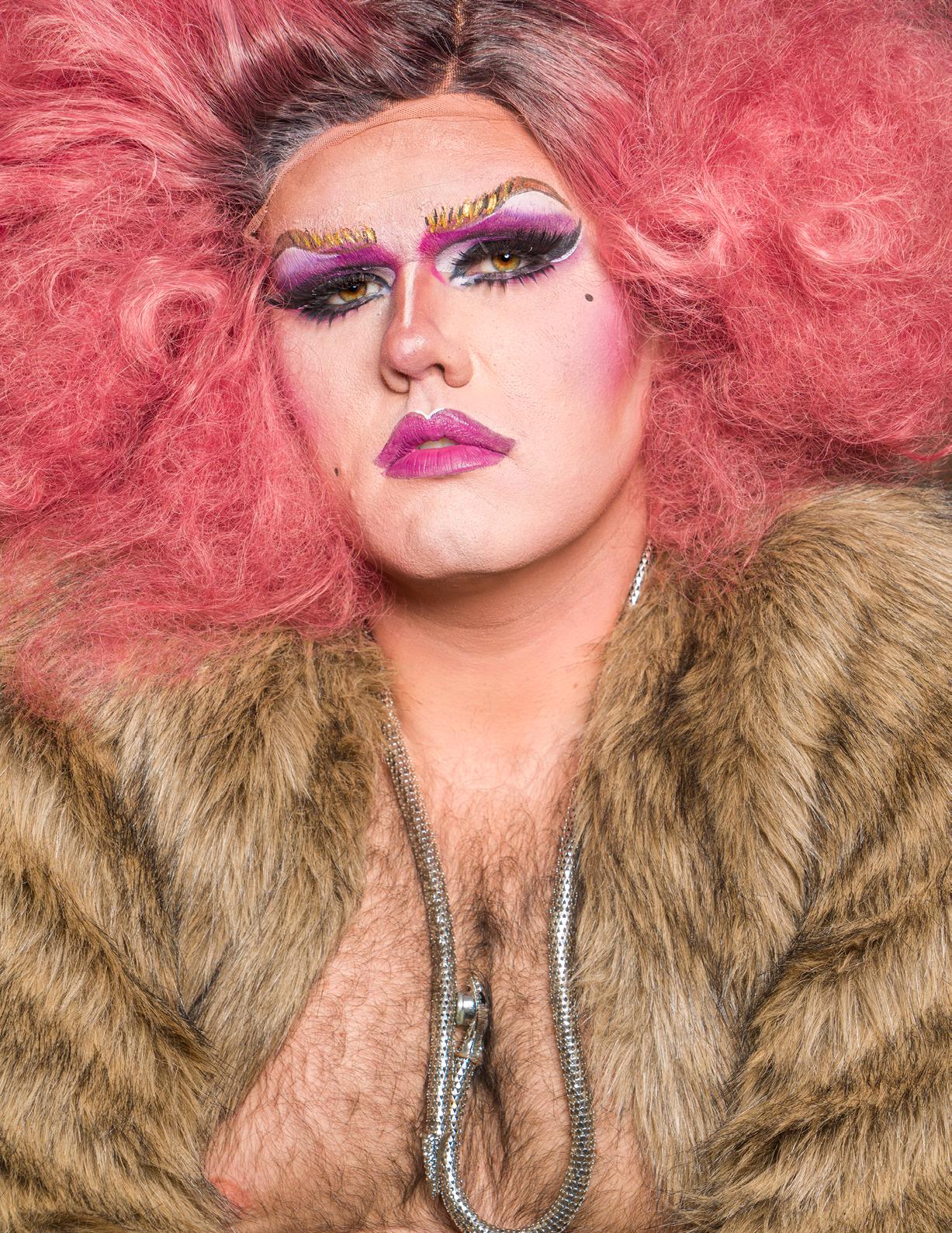
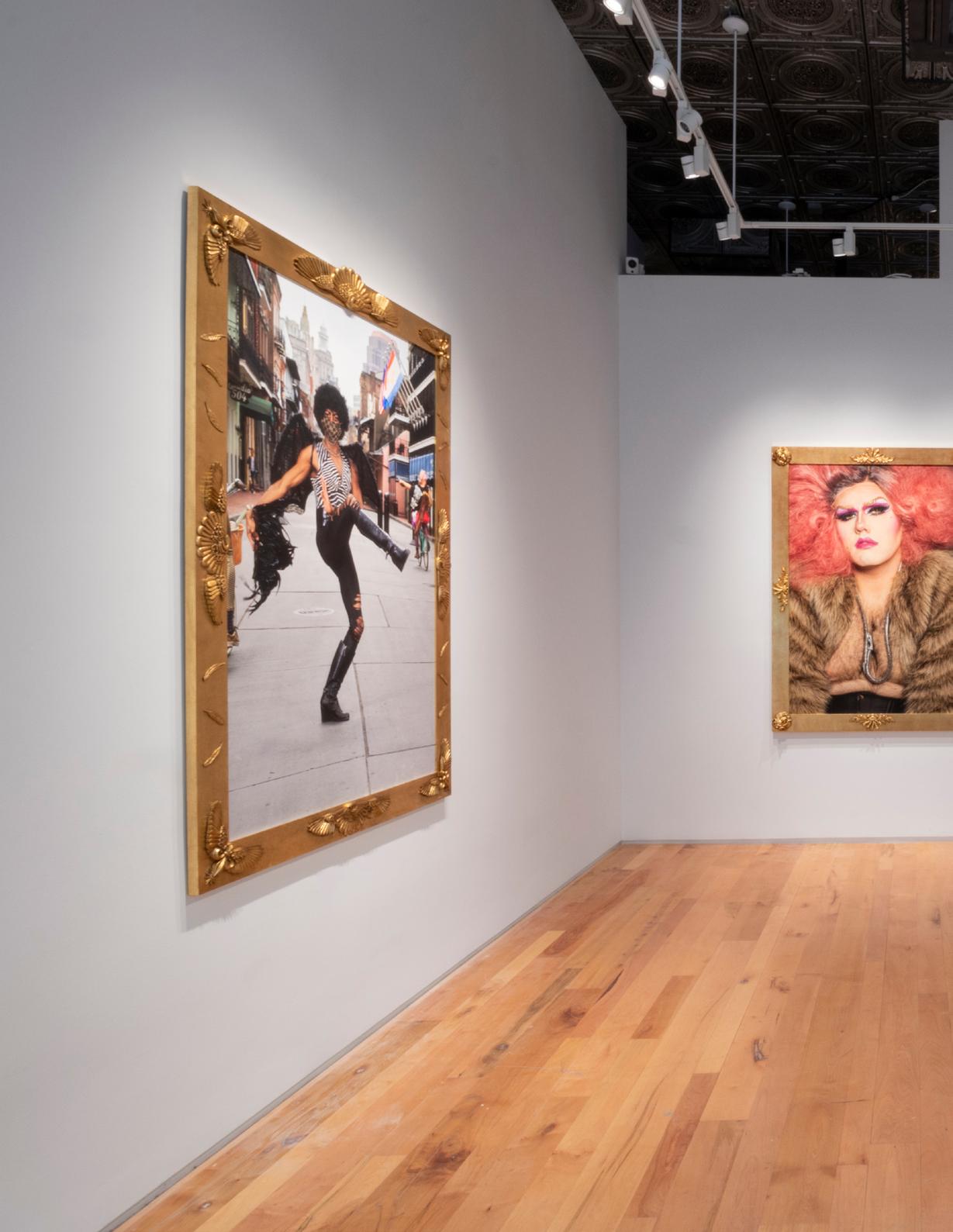
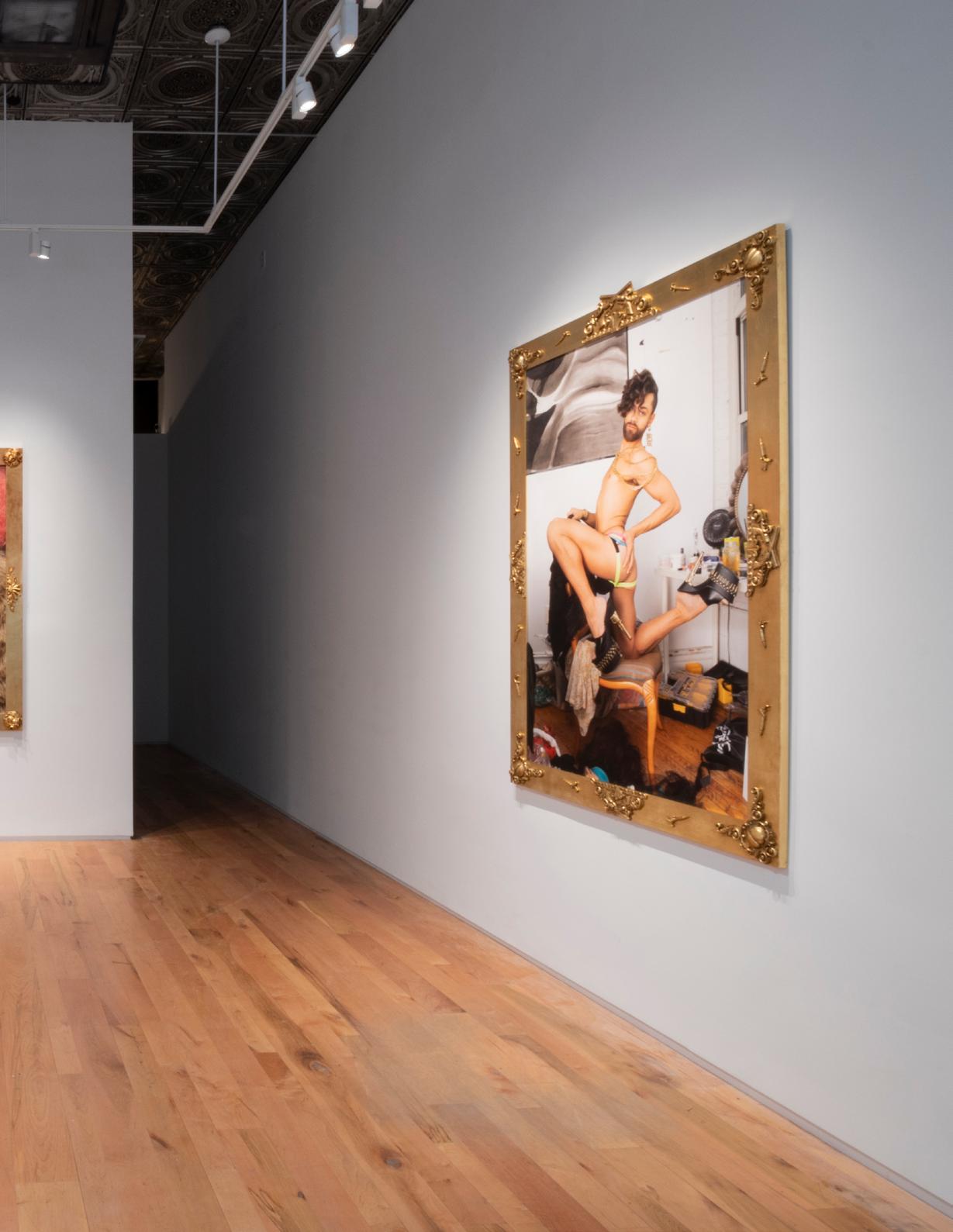 Installation view of Best Lives in Thirst/Trap, Denny Dimin Gallery, New York, 2020.
Installation view of Best Lives in Thirst/Trap, Denny Dimin Gallery, New York, 2020.
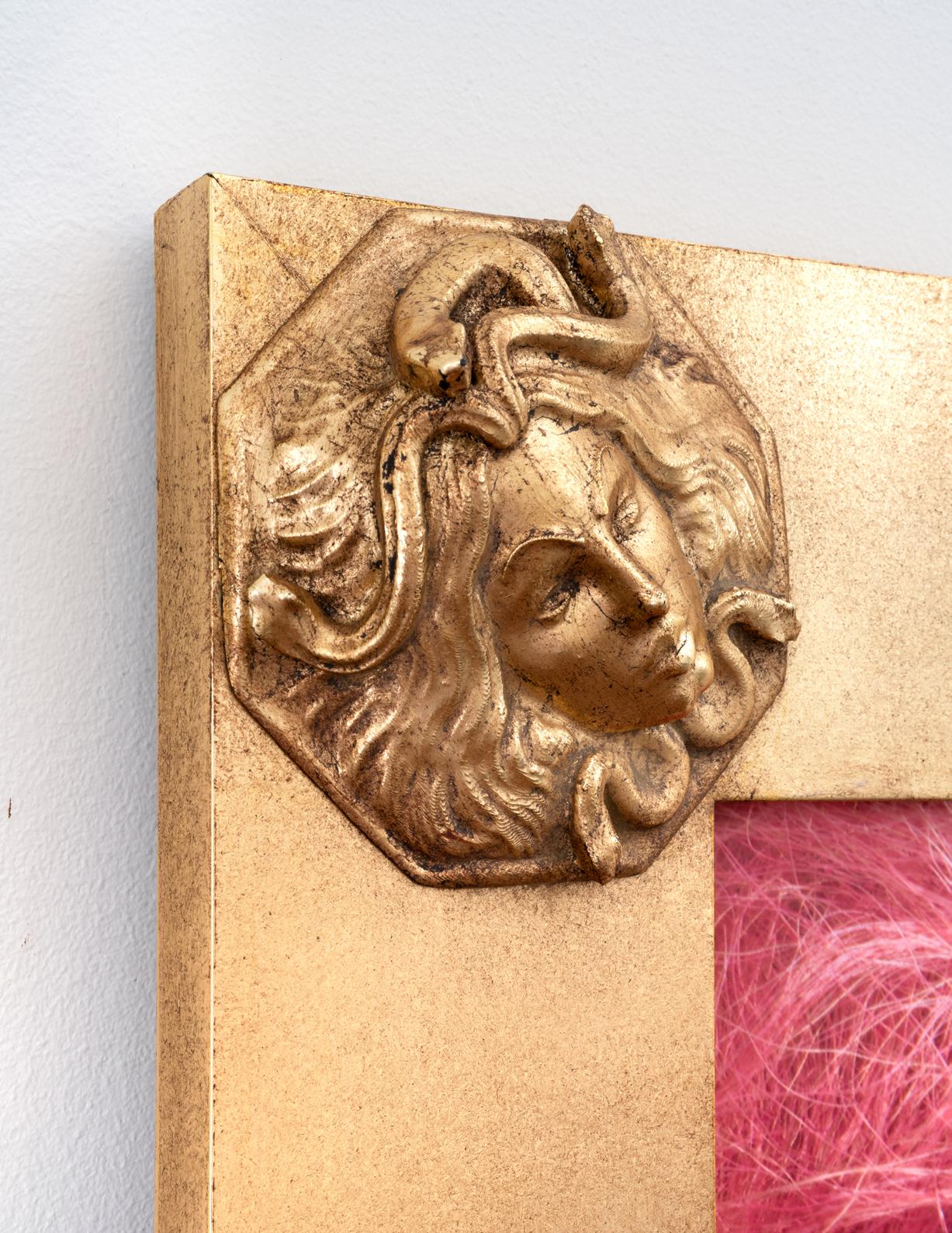
queer hashtags on social media—such as #instagay, #nonbinary, and #genderfluid. Many on social media use such hashtags to create community and to self-identify, and the hashtag is a conduit for new viewers of an image beyond one’s circle of followers or friends. When Fader’s algorithm encountered one of these queer hashtags in his geographic area, it alerted him. He would then contact the poster and ask them if he could photograph a new picture of them. This resulted in a negotiation between Fader and his sitter, and the photograph would be taken soon thereafter (sometimes even the same day).
In the Best Lives collaborations, Fader worked with his sitter to take the photograph as they wanted to be seen, and it is the sitter’s decisions to focus on certain traits, objects, or elements that he showcases. The results are often-jubilant photographs with layers of signs and objects chosen by the sitter to mark their particularity and identity. Much like the hashtag, there is a contradiction here—the commonly used hashtag or symbol is both a means of individual identification and a conformity to an accepted usage. It is precisely that cross-purposed self-realization that Fader’s series explores, and his photographs chronicle the range of ways that queer and genderqueer individuals have used the photographic image, the hashtag, and symbolic objects to be themselves (their “best lives”) and be part of a community (and, it should be said, that community’s reliance on shared emblems and their commodification). Fader comments on this through the elaborate frames for each large-scale photograph (blown up to the size of painted society portraits that one might find in museums). Each bespoke frame draws out common symbols used both to celebrate the sitter’s desire for self-imaging and to remind us how we traffic in shared hashtags, emblems, and pictograms to meet those desires.
In 1999, when queer communities were hard to visualize and to see (especially in small towns), it would have been inconceivable that one could type the phrase “#instagay” into your handheld phone and see millions of images (at this writing, about 42.2 million) of queer people who proudly put their images into the world. That distance is the basis for the coupling
of Insufficient Memory and Best Lives , representing two moments when digital photography is both enabling of connection and troubling for its erasures and homogenizations.
It is useful to see these two recent bodies of work against Fader’s long-running investigation in the traffic in digital pictures. He was one of the first artists to recognize how social media’s use of the digital photograph was a paradigm shift. He focused, in particular, on the profile picture—those idealized emblems of self-presentation through which individuals on social media identify and are identified. Even those who refuse a self-portrait in a little circle on their Instagram or Facebook pages still are compelled to articulate themselves in relation to the imperative to have a profile picture. This development went hand-in-hand with the spread of high-quality, easily-available digital photography, and Fader’s work has long interrogated the profile picture as a locus of desire. In year-long project ‘Sup (2010–2011), Fader spent 365
days on gay dating apps soliciting collaborators with the promise of new profile pictures. The contract involved going on a date, with Fader taking a picture at the beginning of a date and one at the end. Many took him up on this offer, and it became a means to examine the disjunctions between how people presented themselves in social media versus in an in-person interaction. Some of the connections lasted months (and some hours), and Fader archived all communications with his participants as a means of
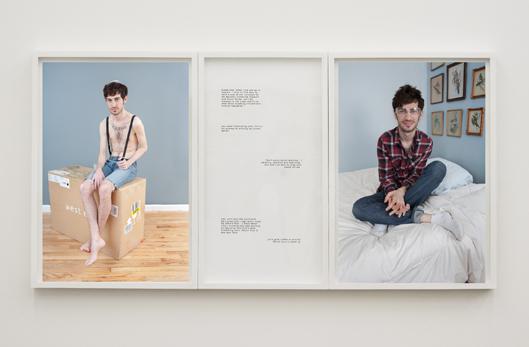
further triangulating the space between who they wanted to be seen as, how they appeared to Fader, and how those appearances became modified over time through the establishment of a correspondence, a friendship, or a relationship. As in so much of Fader’s work, digital portrait photography was the excuse for a social practice involving collaboration, negotiation, and mutual inflection. His next year-long project involving profile pictures, 365 Profile Pics (2016–2017), involved him outsourcing photographic manipulation to a global network of online contractors, who were paid by Fader to “make me look awesome.” Given a stock group of photographs of Fader, they used Photoshop to put him into scenes and situations that they thought he would think were amenable and enviable (a father, an officer, a boat-owner, a hunter, an astronaut, etc). Each day, these were posted as Fader’s profile pictures on his social media accounts. The result was a
compilation of fantasy profile pictures, often with a high level of kitsch, that made painfully clear the normativity and whiteness that were seen as inextricable from American identity by these Photoshoppers working from other parts of the world. In both these projects, Fader did not shy away from the ways that profile pictures are often generic, cheesy, partial, and uncomfortably intertwined with commodification. This is the condition of profile pictures, and Fader’s projects urge us to face the profile picture as a nexus of desires and projections above and beyond those of the individual. The profile picture is never one’s own.
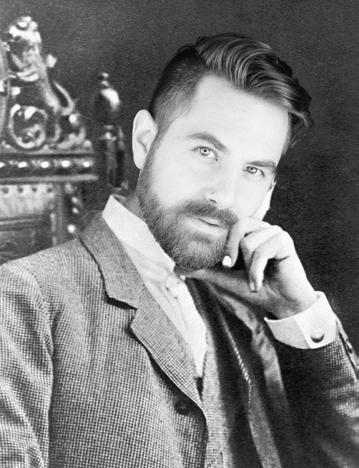 365 Profile Pics 120/365, 2016. Archival inkjet print, 16 x 20.91 in, Edition 3 + 1 AP.
365 Profile Pics 120/365, 2016. Archival inkjet print, 16 x 20.91 in, Edition 3 + 1 AP.
In Best Lives , Fader extended these concerns. From each photoshoot, it was the sitter who made the final choice of the image to be enlarged to this heroic scale—for it was this image that they also posted to their social media account. By giving the final decision over to the sitter, Fader relinquishes a degree of authorship over the image, and this is a recognition of the ways in which digital images and profile pictures themselves complicate ownership. The profile or Instagram picture is never singularly controlled, and it circulates widely and in unexpected ways. This is, after all, the purpose of the hashtag’s leaps between self-contained circles of followers or friends. Fader embraced this condition with Best Lives . To some viewers, no doubt, the photographs will appear excessive, vulgar, or gauche ; to others they will seem fabulous, sexy, or proud. This is the reality of the digital photograph today, and Fader’s work asks us to see how see such photographs as the profile picture, the Instagram thirst trap, or the selfie are evaluated, enjoyed, ridiculed, and circulated. It is confrontational to see these normally hand-held screen images this large, and in that move Fader demands that images such as these be recognized as exemplary of portraiture today.
The images in Insufficient Memory are also on a grand scale for this reason, and this somber body of work witnesses forgotten losses. By coupling these photographs with contemporary profile pictures, Fader prompts us to remember how the present-day horizons for queer and trans lives must be understood in relation to the histories of survival, loss, and activism that came before. As I write this essay, the United States Supreme Court issued a 6-to-3 ruling declaring that the 1964 Civil Rights Act protects LGBT people. Common in the rush of commentary in the 24 hours since the news has been the recognition (from all positions) of how much public attitude has changed in the last decades. That change has been the result of activism, love, struggle, community, and defiance—all of which have been buoyed by the photographs we share of each other, reminding us that we are not alone in this. The bookends of Fader’s project, twenty years apart, are a further way to visualize how far we’ve come, what we have forgotten, and what there is left to do.
David J. Getsy is the Goldabelle McComb
Finn Distinguished Professor of Art History at the School of the Art Institute of Chicago.
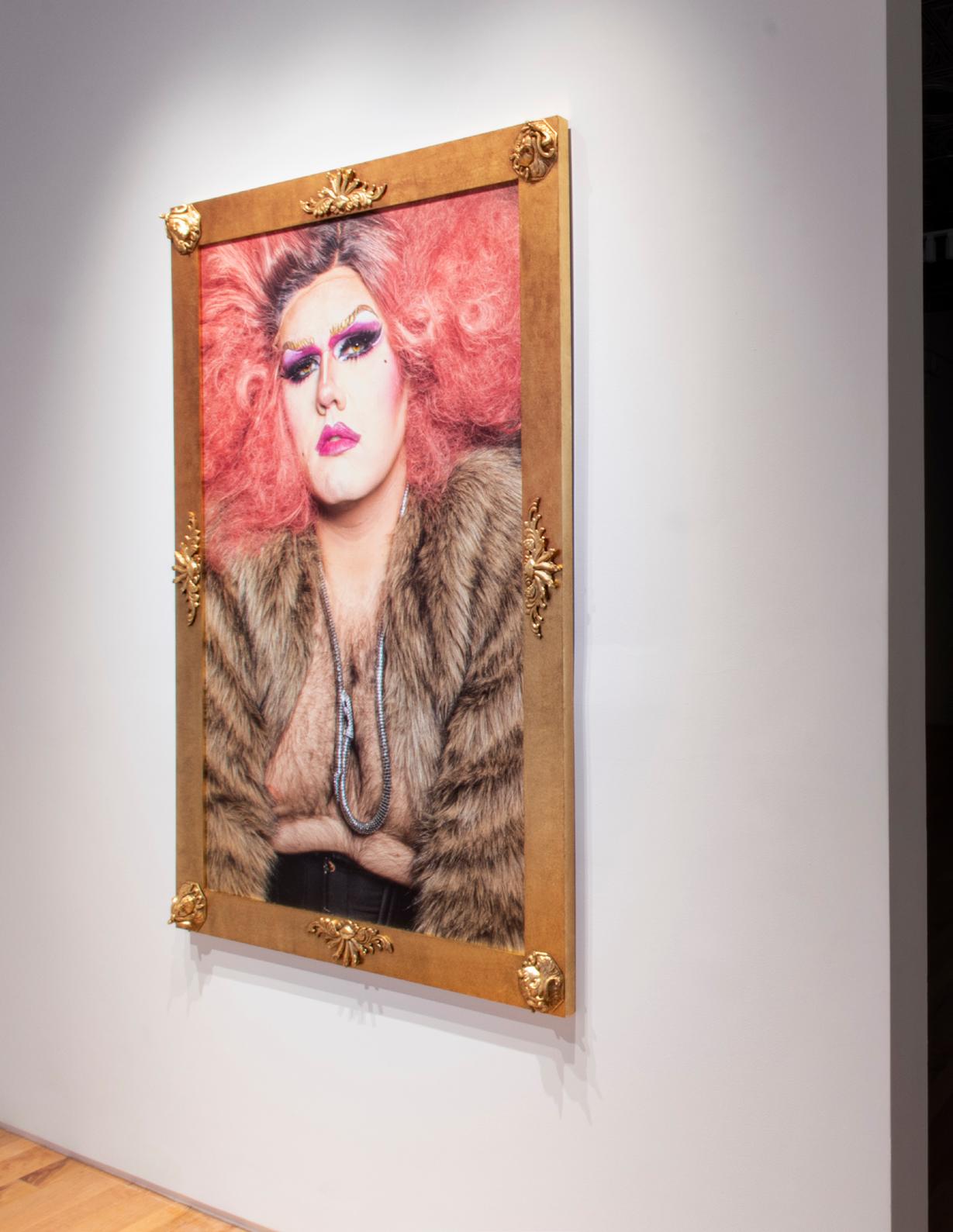
 Installation view of Thirst/Trap , Denny Dimin Gallery, New York, 2020.
Installation view of Thirst/Trap , Denny Dimin Gallery, New York, 2020.

@gogo_gemini
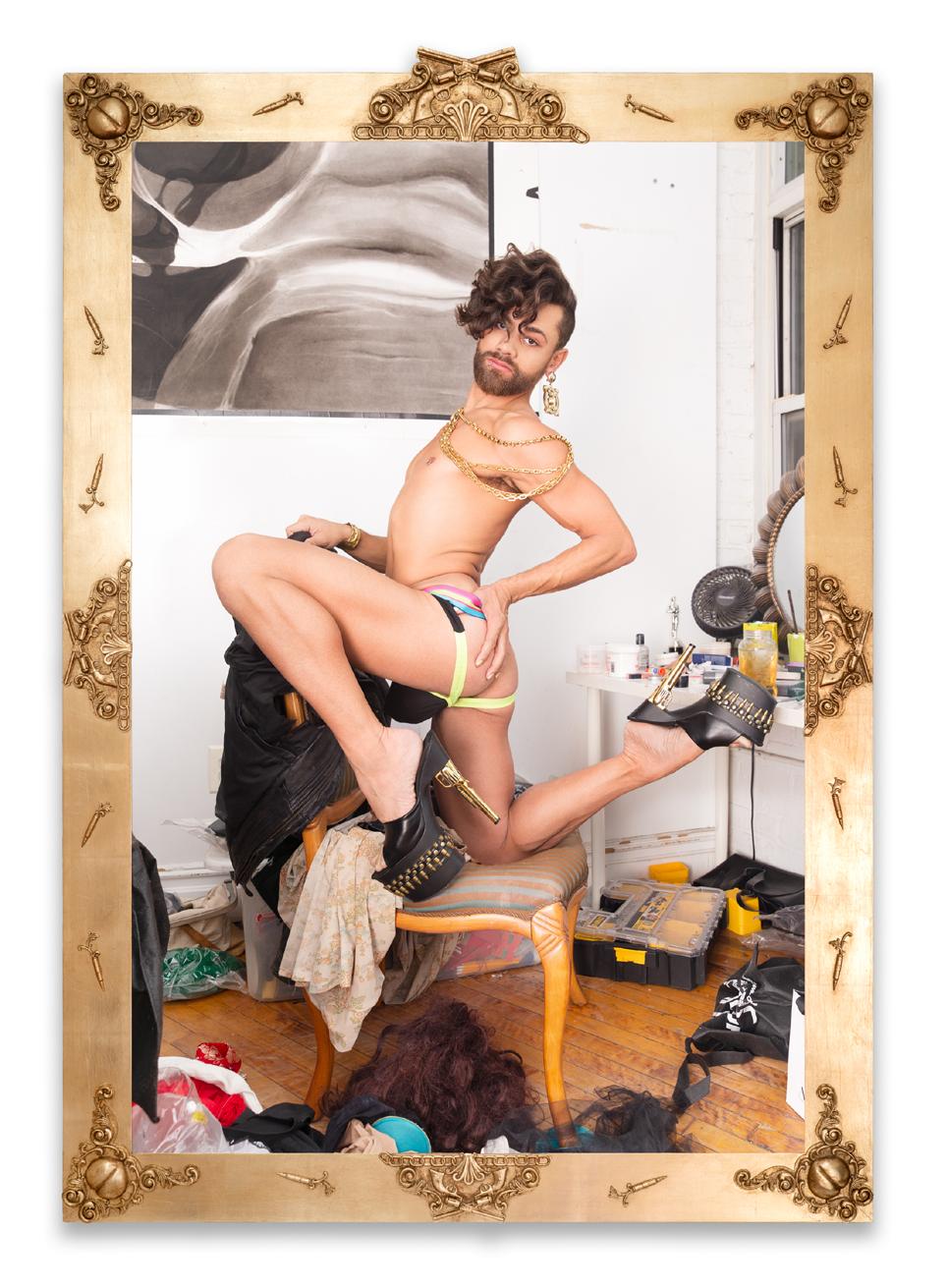
@Beefcake_Dragqueen #queer #instagay #instabear , 2019-2020.
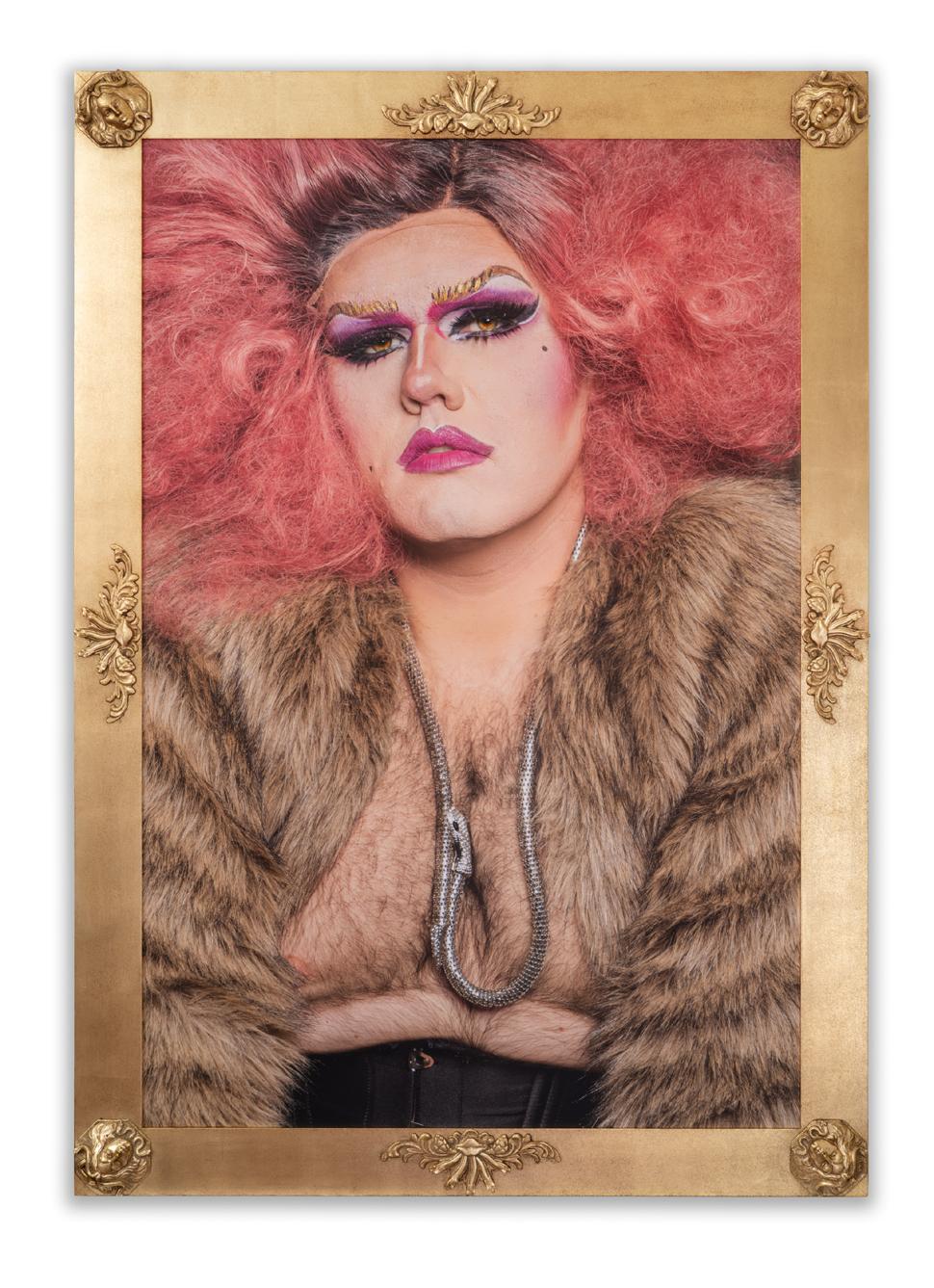

@gaffthewitch #queer #gay #gaywitch #swampwitch , 2019-2020.

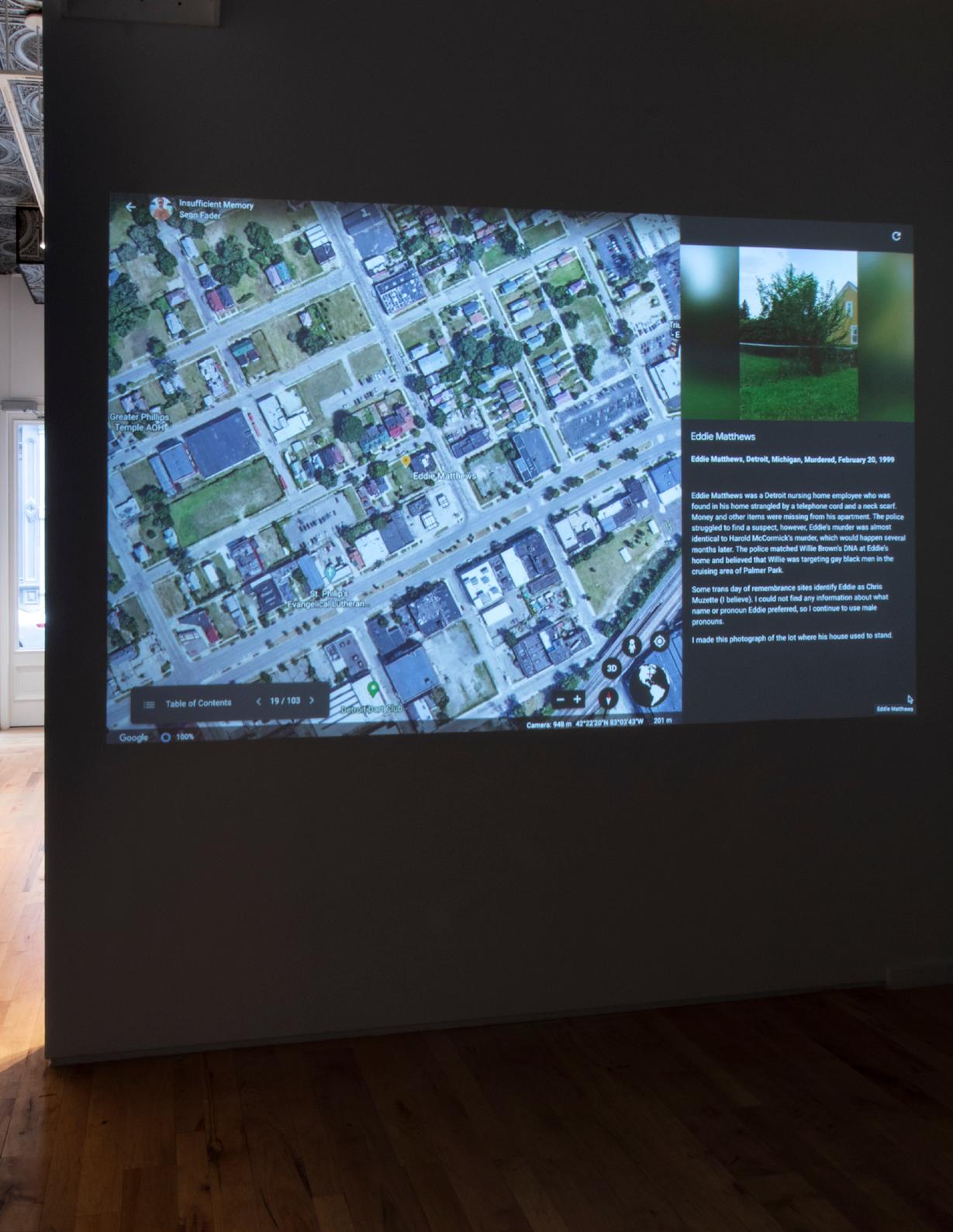
Sylacauga, Alabama, Murdered, Feb 19, 1999
Billy Jack Gaither was a 39-year-old gay man who lived with his disabled parents in Sylacauga, Alabama. He cared for them and worked at the nearby Russell Athletics apparel company. His body was found burned on top of a pile of tires on the side of a creek outside of town.
His throat was cut, and his body was savagely beaten before being set on fire. The two men who carried out the murder, Steven Mullins and Charles Monroe Butler, claimed that Billy Jack had come on to them and his sexuality was why they killed him. Witnesses came forward and testified that Steven had had sex with men before and that he may have had a relationship with Billy Jack prior to killing him. In June 1999 Steven Mullins pled guilty to capital murder; Charles Butler stood trial and was found guilty of the same charge by a jury. In August 1999 both men were sentenced to life in prison without parole. In March 2019 Steven was fatally stabbed in prison.
The Billy Jack Gaither Humanitarian Award
recognizes “an individual or organization that has shown extraordinary courage in the struggle against hatred and contributed to the creation of a just society.”
The location where Billy Jack was murdered was difficult to find. It’s deep in the Talladega National Forest. I read Stephen’s confessions over and over and jotted down his description of a small sign with a boat on it marking the gravel road into the forest. When I arrived in Sylacauga, I drove out on Millerville Highway, looking for a small sign with a boat on it. My phone overheated and shut off. After holding it over the AC vent for a while, the phone turned on, and I realized I had gone way beyond where I thought I should have. I looked for a place to turn around. I pulled into a gravel road to make a U-turn, looked up, and there was the small sign with the boat. I would have never seen it driving by. I drove into the forest, turning left and then right as Stephen described in his confessional. When I arrived at the boat launch, the sky opened up and it began to pour.

Dallas, Texas, Murdered December 8, 1999
An unnamed intersexual three-day-old infant was murdered from blunt-force trauma to the head, as well as strangulation. The infant’s parents reported the murder. Gangaudaya Kavali, the infant’s father, claimed that when he was at the store his wife, Aruna, left their infant on the couch while she stepped into the bathroom. She claimed that while she was in the bathroom a stranger entered their apartment, stole the infant, and threw him outside.
A Collin County Medical Examiner found shards of glass in the baby’s esophagus and small intestine, indicating that someone initially tried to kill the child by forcing them to eat glass, in an effort to cause internal bleeding. Aruna was eventually found guilty of murdering her three-day old child.
The murder was not tried as a hate crime. The media repeatedly identified the child as male and referred to the child’s genitalia as being deformed.
When I arrived at the apartment complex that the Kavali family lived in when the murder took place, it was raining. Suddenly, the rain broke and a rainbow appeared in the sky over their building. I made this picture in front of the home where the infant was murdered.

Suitland, Maryland, Murdered May 15, 2000
Carla Natasha Hunt, a 35-year-old trans woman, was found shot to death in the foyer of her apartment. She was the second trans woman to be found dead in the Washington, D.C., area in 2000. The police did not pursue either death as a hate crime. The police repeatedly claimed knowledge that both women frequented a section of the city known as a gathering place for “transsexual persons who solicit sex for money.” There was no evidence that either one of them engaged in sex work.
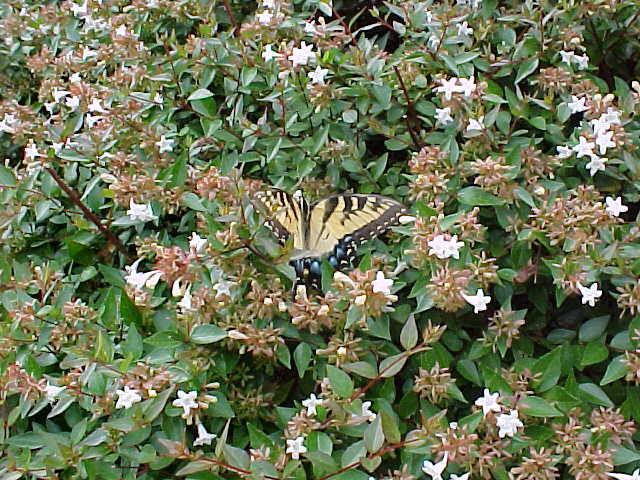 Henry Stuart Matis
Henry Stuart Matis
Los Altos, California, Murdered February 25, 2000
Henry Stuart Matis, a 32-year-old gay man and devout member of the Church of Latter-Day Saints, pinned a note to his chest that said “Do not resuscitate” and shot himself on the steps of his church. Raised in the Mormon religion, and knowing he was gay by age 7, Henry had long struggled with the church’s position on homosexuality as he tried to reconcile his being gay with his faith. The church regards homosexuality as a sin, advocating that gays and lesbians be celibate for life, and its involvement with Prop 22 particularly disturbed Henry. He’d come out to his parents the year before he killed himself, and despite their support, he felt he had to choose between “life” or being Christian.
In his suicide letter, he wrote, “Mother, Dad and family. I have committed suicide….I engaged my mind in a false dilemma: either one was gay or one was Christian. As I believed I was Christian, I believed I could never be gay.”
I took this image in front of the church where he killed himself.

Passaic, New Jersey, Murdered August 29, 1999
Kareem Washington’s mother said he “loved people and was very happy-go-lucky.” Kareem was found dead on Hanover Street by two workers from a nearby trucking company. Kareem had been stabbed several times in the back and throat. The coroner also said he sustained several “defensive” knife wounds.
Police and news reports reported that Kareem “lived alternately in Newark and Passaic.” The reports focused on the fact that Kareem was wearing women’s clothes and that the industrial area was known to police as a hangout for prostitutes. The police told news outlets that they believed he may have been a prostitute who was killed by his pimp. No evidence was found to support this theory, but the news never deviated from this narrative. The murderer was never found.
I made this photograph looking down the dead-end street where Kareem’s body was found.

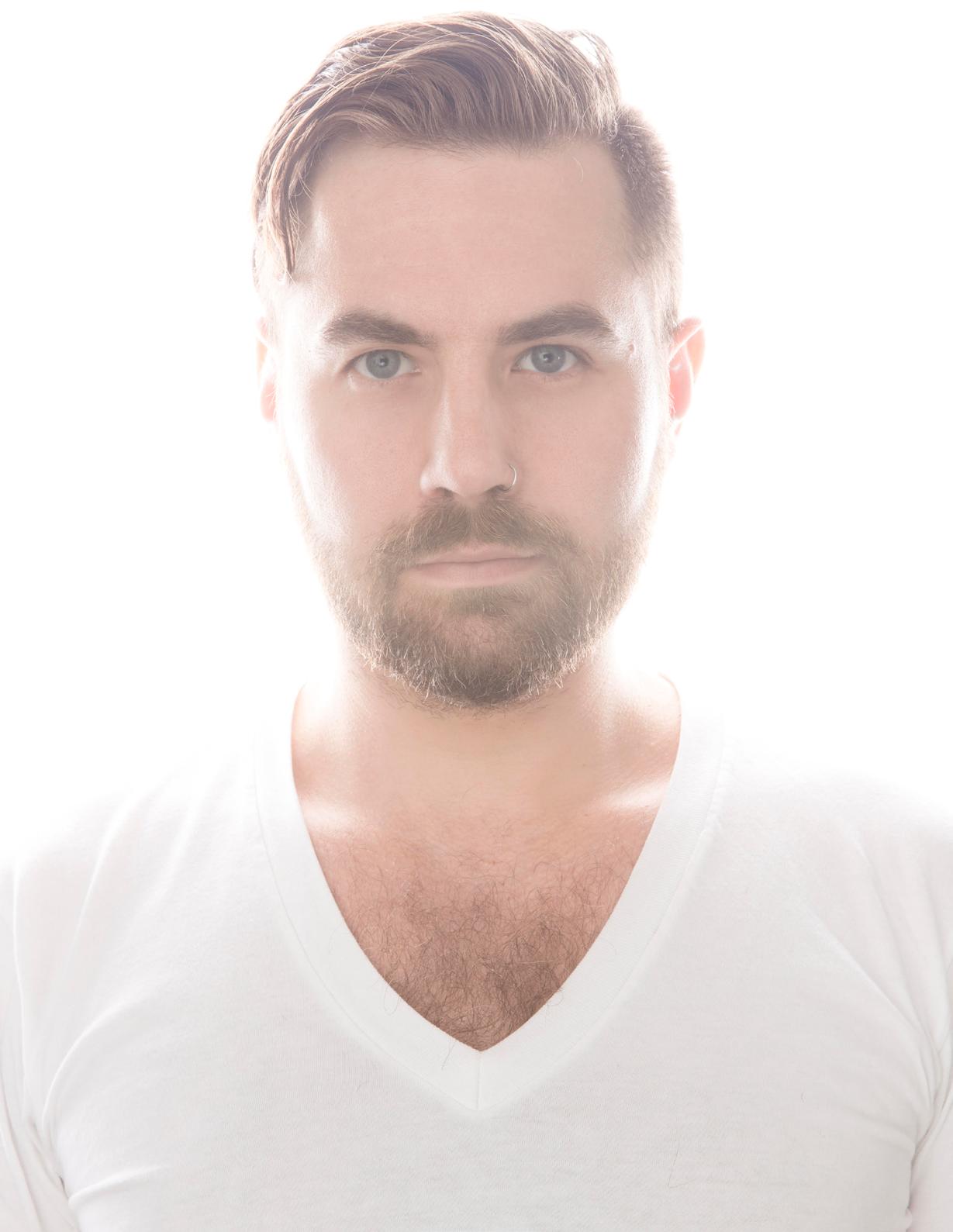
Born 1979 Los Angeles, California
Lives in New Orleans, Louisiana and Brooklyn, New York
Professor of Practice in Photography, Tulane University
2008 MFA School of the Art Institute of Chicago, Chicago, IL
2006 MA Maryland Institute College of Art, Baltimore, MD
2002 BFA New School University, New York City, NY
2001 CD American Musical & Dramatic Academy, New York, NY
1998-2001 Northwestern University, Evanston, IL
SOLO EXHIBITIONS
2020 Thirst/Trap, Denny Dimin Gallery, New York, NY
2017 365 Profile Pics, SPRING/BREAK Art Show, with Denny Gallery, New York, NY
2016 #Fernwings, Bemis Center for the Arts, Omaha, NE
#Fernwings, Socrates Sculpture Park, LIC, NY
2015 Backdrop for the Rebirth of the Collective Author (“There’s a Whole Lot of Authorship Going On.” - Richard Prince), SPRING/BREAK Art Show, New York, NY
2014 SUP?, University of Illinois, Springfield, IL
#wishingpelt, Curated by Elizabeth Denny, Spring/Break Art Show, New York, NY
#wishingpelt, Pulse Project, Pulse Art Fair, Sponsored by AKArt, New York, NY
2013 Sean Fader is the Wishing Pelt, Defibrillator Gallery, Chicago, IL
2009 I Want To Put You On, Digital Artists Space, Troy, NY
2008 I Want To Put You On, 3rd Ward, Brooklyn, NY
SELECTED GROUP EXHIBITIONS
2019 On the Map, Denny Dimin Gallery, Hong Kong
2018 Apparatus for a Utopian Image 2, Center for Contemporary Arts, Prague, CZ
You Never Know How You Look Through Other People’s Eyes, Institute of Contemporary Art (ICA) at Maine College of Art (MECA), Portland, ME
Contemporary Performance, Florida Museum of Photgraphic Arts, Tampa FL
2017 Facial Profiling, curated by David C. Terry, C24 Gallery, New York, NY
2016 Drama Queer: seducing social change, Queer Arts Festival, Vancouver, Canada
Apparatus for a Utopian Image, EFA Project Space Program, New York, NY
Tasteful Yet Biting, Curated by Kim Brickley, CRUXspace, Philadelphia, PA
PICTURE YOURSELF: Selfied, Cellphones, and the Digital Age, Curated by Leah Mirakhor and Kitty McManus Zurko, College of Wooster Art Museum, Wooster, OH
SIT STILL: photography, portraits, and doubling, curated: Nicole Coffineau, Revision Space Gallery, Pittsburgh, PA
2015 ...and I Feel Fine, presented by Ghost of a Dream, The Re Institute, Millerton, NY
Transgressive Inversions + Identities, Curated by AKArt, Spring/Break Art Show, New York
Share This! Appropriation After Cynicism, Denny Gallery, New York, NY
SWAP, Studio La Suite, Morelina, Mexico
I’ll Show You Mine If You Show Me Yours: Love In The Modern Age, Esteven Art Gallery and Museum, Saskatchewan, Canada
2014 Manly Men, Girly Girls and Everybody in Between, NIU Art Museum, North Illinois University, DeKalb, IL
Strange Bedfellows, FIU, Florida International University, Miami, FL
Strange Bedfellows, Handwerker Gallery at Ithaca College, Ithaca, NY
Strange Bedfellows, A+D Gallery Columbia College, Chicago, IL
2013 Strange Bedfellows, Samek Gallery, Bucknell University, Lewisburg, PA
Strange Bedfellows, Roots and Culture Gallery, San Francisco, CA
How To Do Things With Hair, Curated by Barrak Alzaid, The Jam Jar, Dubai
The Participants, Denny Gallery, New York, NY
White Boys, Curated by Hank Willis Thomas and Natsaha L Logan, Haverford College, Haverford, PA
Dynasty, Curated by Sara Reisman , Christopher K. Ho, Amy Goldrich, and Omar Lopez-Chahoud, Hotel Particular, New York, NY
Fon’ Seks: Handheld Digital Technology and the Transformation of Intimacy, University of Illinois, Springfield, IL
Looks Like Torture, Here Arts Center, New York, NY
2012 Studio La Suite, Morelina, Mexico
It’s a Small Small World, Family Business, New York, NY
2010 Undressing the Feminine, Mindy Solomon Gallery, St Petersburg, FL
2009 The Wassaic Summer Show, The Wassaic Project, Wassaic, NY
Your Face Your Race, the Way That You Walk, VINESpace, London, England
2008 Salon 08, Matt Roberts Arts, VINESpace, London, England
11th Annual Chicago Art Open (Critics’ Choice), Chicago IL
Hic et Nunc (Here and Now), Co-Prosperity Sphere, Chicago, IL
Everyday People, Estudiotres, Chicago, IL
Yes, Leather Archives and Museum, Chicago, IL
2007 First Look II, Hudson Valley Center for Contemporary Art, Peekskill, NY
Group Show no. 16, Humble Arts Foundation, New York, NY
This is Not a Self Portrait, Project Space, Chicago, IL
2016 #Fernwings, Bemis Center for the Arts, Omaha, NE
Yes Gaga!, Satellite Art Fair, Miami, Fl
#Fernwings, 30th Anniversary Gala, Socrates Sculpture Park,New York, NY
2015 Backdrop for the Rebirth of the Collective Author (“There’s a Whole Lot of Authorship
Going On.” - Richard Prince), Residency Unlimited, New York, NY
2013 Sean Fader is the Wishing Pelt, Defibrillator Gallery, Chicago, IL
2010 OPA!, Johalla Projects, Chicago, IL
2015 EFA (The Elizabeth Foundation for the Arts) Studio Program, New York, NY
2013 NYFA Fellowship in Photography Award 2013, New York, NY
A Blade of Grass Fellowship 2013, New York, NY
2012 Magenta Foundation Flash Forward 2012, USA Winner
2008 Gawker Artist
Critic’s Choice, Professional Category, 11th Annual Chicago Art Open, Chicago, IL
Leadership Award, School of the Art Institute of Chicago, Chicago IlL
2006 Murthy Digital Arts Award, Baltimore, MD
Published on the occasion of the 2020 exhibition at Denny Dimin Gallery, New York. June 18 – August 21, 2020.
Essay by David J. Getsy Images © Sean Fader